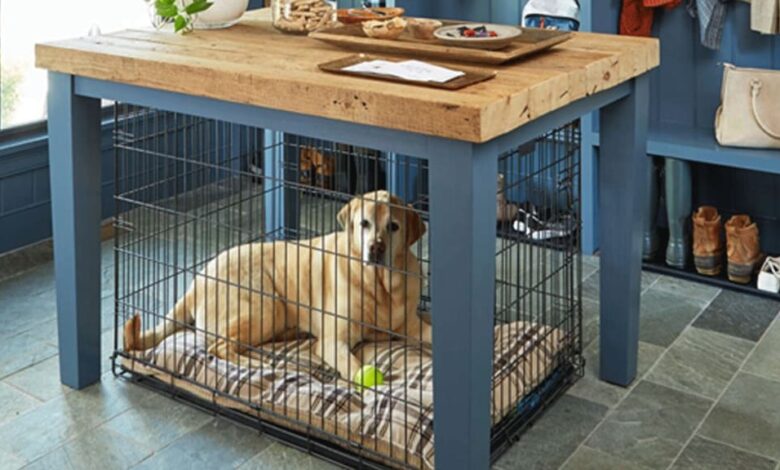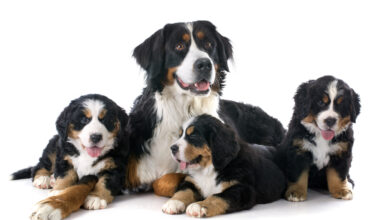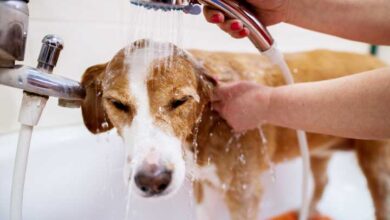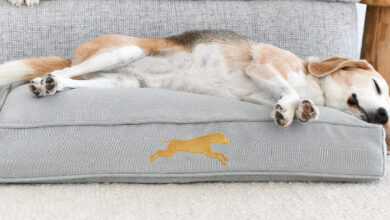Dog Kennels: Choosing the Right Dog Kennel for Your Canine Companion

FAQs about Dog Kennels
What is a dog kennel used for?
Dog kennels serve several important purposes. Firstly, they provide dogs with an outdoor living area in which to spend time when owners are absent. This allows dogs to potty outside the home while staying contained safely. Kennels are also used at boarding facilities, dog shows, breeding operations, and animal shelters to house multiple canines. Kennels offer dogs a dedicated space to sleep, eat, play, and shelter from the weather. They keep dogs separated for territorial reasons or due to breeding schedules. Kennels also give dogs a protected area for exercising, exploring, and decompressing from stressors like travel or new environments. So, in short – dog kennels are outdoor housing that enables dogs to live comfortably while their owners are away or in multi-dog situations like boarding facilities.
What is the meaning of the kennel of dogs?
The term “kennel of dogs” has a few related meanings:
- It can refer to a group of dogs bred, raised, and housed together by an individual or dog-breeding business. These dogs often come from the same lineage or bloodline.
- It describes a pack or collection of dogs residing within a multi-dog kennel facility such as a shelter, breeder, veterinary clinic, or hobbyist’s property.
- In its older usage, a kennel of dogs implied a hunting pack owned by a single person or family. These dogs would be trained together for activities like tracking, flushing, or retrieving games.
- Colloquially, “kennel of dogs” can simply mean any number of dogs residing together within a domestic or commercial kennel space.
So, in essence, a kennel of dogs refers to a community of canines housed collectively and often under the care of a single owner, breeder, or organization within a kennel setting.
Is it okay to keep a dog in a kennel?
Keeping dogs in kennels can be acceptable if done properly. Kennels should not be used as a long-term housing solution or substitute for human interaction/training. However, kenneling is humane in several scenarios:
- When owners are away at work/school if the kennel space is appropriately sized and the dog is let outdoors regularly for exercise and potty breaks.
- At nighttime for puppies still being house-trained or dogs prone to destruction/anxiety.
- During mealtimes establish boundaries and prevent food aggression issues.
- When supervised by experienced handlers at certain events like dog shows, trials, or veterinary appointments.
- Temporarily at boarding/grooming facilities or animal shelters until adoption.
Proper kennel environments include exercise, mental enrichment, socialization, quality time with owners, and adequate space for comfort. Over-kenneling or leaving dogs confined for very long periods is considered inhumane by animal welfare organizations.
What does it mean to kennel your dog?
When a dog owner says they are “kenneling their dog,” it means the confinement of the dog within an enclosed space specifically designed for that purpose – commonly known as a dog kennel. There are a few scenarios where kenneling a dog may occur:
- Boarding the dog at a kennel or doggy daycare facility while traveling away from home.
- Housing the dog in an outdoor kennel run or indoor cage area when owners are out of the home for long periods.
- Short-term confinement of the dog in a crate for house-training when transporting in vehicles or during mealtimes.
- Keeping dogs in individual kennels for veterinary examination, grooming, shows, or breeding purposes.
- Shelter dogs residing in kennels until adoption.
The key aspect is containment within a closed, usually rectangular structure that allows the dog to stand, lay down, and turn around comfortably while separated from other animals, young children, or home interruptions when needed. Kenneling provides safety while owners are absent.
How long do dogs stay in a kennel?
There is no definitive answer as to how long is too long for dogs to remain confined in kennels, as it depends on individual circumstances. However, overall guidelines are:
- Puppies under six months should not be left crated for more than 3-4 hours at a time to prevent distress.
- Adult dogs should not exceed 8-10 hours per day in kennels, including time spent crated at night or during owner work hours.
- Boarding facilities aim to let dogs spend no more than 10-12 hours isolated in runs or cages per 24 hours with additional playtime.
- Shelter kennel environments should balance dog housing with exercise/socialization to minimize stress from long-term confinement.
- Show dogs may stay crated for longer periods as it is a familiar situation, however breaks are essential for health.
- Animals being transported professionally should never exceed 24 hours without a rest stop, including access to potty areas, water, and stretching.
In general, the less time dogs spend confined alone, the better for their well-being. Mental and physical activity time spent with owners is ideal.
What is a dog’s house called?
There are a few terms commonly used to refer to structures that provide shelter or housing for dogs:
- Dog house – A small enclosed shelter built specifically for pet dogs to use as shelter from the weather or a place to sleep. It is often insulated for warmth.
- Kennel – Traditionally refers to an enclosed, wired pen-like structure that houses dogs, either individually or in groups. Modern usage includes sheltered dog “condos.”
- Crate – Also called a dog crate, this is a gated enclosure traditionally made of plastic or wire used to safely confine or transport dogs. It is not fully enclosed like a house.
- Run – An enclosed fenced area outside that allows contained exercise and potty space for dogs attached to or surrounding a kennel area.
- Shelter – A general term referring to any covered structure such as a lean-to, small barn, or garage area that provides dogs protection from elements.
Dogs are beloved family members for many Australians. Whether you recently adopted a puppy or have an older dog, providing a safe and comfortable outdoor area is important for their well-being and your peace of mind.
Dog Kennel Outdoor Living
If you have a large backyard, an outdoor dog kennel gives your dog space to play and potty away from your home’s interior. A spacious kennel allows for exercise and stimulation when you aren’t able to directly supervise. Look for a kennel sized appropriately for your dog’s breed – most require a minimum of 10ft x 10ft (3m x 3m) of room to move comfortably. Larger and more active breeds may need significantly more space.
Kennels designed for outdoor living should be well-ventilated with open wire sides or panels. This allows air circulation while safely containing your dog. The flooring should be durable and easy to clean – options include concrete, gravel, or coated wire. Avoid thin or flimsy kennel floors that could cause injury. Raised floors also help keep your dog dry and comfortable in wet weather.
For outdoor kennels, consider a covered area. This provides shelter from sun, wind, and rain. Look for a kennel with an insulated roof and at least one solid side for wind-blocking. Make sure the cover is securely fastened to withstand storms. Provide comfortable bedding your dog can easily access for napping.
Location is also important for an outdoor kennel. Place it in a quiet area far from roads but still within view of your home. This allows supervision while reducing stress from noises. Fencing the perimeter adds an extra layer of security if you have young children or other pets. Sun exposure and drainage are also factors – pick a spot with good airflow that won’t get too muddy.
With adequate space, shelter, and placement, an outdoor kennel meets your dog’s basic needs for activities and potty breaks year-round. Just be sure to also spend quality time indoors with your furry friend daily for socializing, training, and bonding.
Dog Kennel 10×10
For medium to large breed dogs, a 10ft x 10ft (3m x 3m) kennel size is the minimum amount of space needed. Anything smaller can negatively impact your dog’s health, behavior, and quality of life. A 10×10 kennel allows for separate areas for sleeping, playing, and eliminating waste without mixing. It also permits adequate exercise space for most dogs to freely run, jump, and play.
A 10×10 kennel size suits breeds like Labs, Goldens, German Shepherds, Collies, and many others weighing over 25kg as adults. For giant breeds like Great Danes and Saint Bernards, an even larger kennel may be required to prevent overcrowding and stress. Extra space is also appreciated in households with multiple dogs sharing a kennel.
When shopping for a 10×10 kennel, look for durable wood or metal panels forming a rectangular shape. High-grade wire fencing is preferable to thin chain-link for safety and longevity. Components like gates, roofs, and add-ons like beds should complement the main construction. Installation hardware like bolts, stakes and cable ties ensures a sturdy setup able to withstand weather.
Assembling a 10×10 kennel run takes some effort but provides an excellent long-term housing solution for many medium and large dog breeds. With adequate space and amenities, your dog will enjoy this safe outdoor area for activities, potty breaks, and lounging for years to come.
Dog Kennel Large
Large dogs have correspondingly large space needs – for exercising, playing, elimination, and more. A suitably sized kennel run provides an important outdoor area for large breeds. Kennels specifically designed for large dogs start at 12ft x 12ft (4m x 4m) and go up from there.
Common large dog breeds requiring ample kennel space include Saint Bernards, Great Danes, Mastiffs, Great Pyrenees, and Newfoundlands. These gentle giants can weigh 80kg or more as adults. Without sufficient living quarters, it’s difficult for them to be active, eliminate waste appropriately, or prevent boredom/negative behaviors from developing.
When choosing a large dog kennel, construction of heavy-duty wood or metal is preferable for longevity. Reinforced connections like sturdy hinges, latches, and bolts ensure a snug fit. High-quality fencing material stands up to chewing or rubbing from large paws. A wire gauge of 12.5 or smaller prevents injury.
Rooflines should be high enough for large dogs to stand fully without stooping. Wide gates accommodate bulky canine bodies safely entering/exiting. Add-on accessories like extra large dog houses, durable beds, and toys further enrich the space. Deep gravel, sand, or paving allows proper drainage in all weather.
Large breeds have big personalities to match their size. Investing in a generously sized kennel allows them to play, explore, and stretch freely in their outdoor area. This lifestyle support meets their physical and mental needs for health, happiness, and trouble-free care.
Best Dog Kennels
When researching the best dog kennels, consider quality, features, sizing options, and reviews from other pet owners. Here are some top-rated kennel choices suitable for Australian conditions:
MidWest Homes for Pets Outdoor Dog Kennel Run
This heavyweight steel-framed run is incredibly durable and long-lasting. Pens are 8′ tall with doors/gates for easy access. Rust-resistant powder coat finish withstands weathering. Detachable panels expand the footprint up to 16’x16′. Heavy-duty stakes secure it safely in place.
Petmate Vari Kennel
Making secure and comfortable dog housing accessible, this collapsible kennel sets up in minutes. Fabric-coated welded wire panels resist chewing or corrosion. Tie-downs and stakes hold it tautly to any surface. Mesh roof provides ventilation and overhead shelter. Carrying bag conveniently stores and transports it.
Zampa Pet Foldable Metal Pet Kennel
Sleek yet sturdy kennel run folds down for easy storage when not in use. Features welded joints, zinc-coated wires, and a pad-lockable gate for security. Tall sides prevent escape or dig-outs. Sturdy feet level it on any yard surface for indoor/outdoor use.
Suncast Dog Kennel Outdoor Home
Rugged powder-coated steel frame withstands outdoor impacts. Wide-braced panels prevent bowing or sagging over the lifespan. Double doors access both front and back for cleaning convenience. Heavy canopy roofs shelter pets in any climate. The stake kit anchors it firmly to the ground.
With so many great choices, researching materials, dimensions, and reviews will lead you to the best dog kennel for your yard, pet size, and budget needs. Sturdy construction and smart design elements to last through Australian seasons are hallmarks of a worthy investment.
So, in short – a dog’s enclosed shelter for living or sleeping purposes could be called a dog house, kennel, crate, or shelter, depending on the specific structure type. The term “kennel” can refer to either a pen structure or a sheltered living area.



